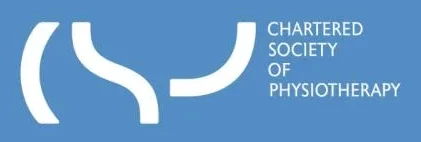Sciatica is a condition that can cause pain, tingling, and numbness in the lower back and legs. The sciatic nerve is the largest in the body, and it runs from the lower back down to the feet. If the sciatic nerve is irritated or compressed, it can cause pain, tingling, and numbness in the lower back and legs. This pain is often relieved in 4-6 weeks; however, physio and chiropractor specialists can help your recovery if the pain continues.
How to Know if You Have Sciatica
If you have sciatica, you will likely feel the following sensations in your bottom, back of your leg or toes:
· Weakness
· Numbness
· Tingling
· Pain – stabbing/burning
Often, these sensations may be increased when you sneeze or cough. You may also experience back pain, however, this is usually less painful than the symptoms highlighted above.
How to Deal with Sciatica Yourself
If the pain is not too overwhelming, our physio and chiropractor therapists recommend trying to go about your life as normally as possible. We also recommend undertaking gentle, regular exercises to get your body moving and loosen the nerves and muscles around your affected area. Using heat packs around painful areas can be useful in relieving pain as it helps to relax the muscles and reduce the strain being put on them. When sleeping, we recommend putting a small, firm pillow between your legs, especially when you sleep on your side. This helps to support your back and posture, giving the trapped nerve more of a chance to return to its normal position.
We recommend that you DO NOT sit or lie down for long periods (aside from sleeping). Movement is crucial when recovering from sciatica, so avoid being stationary for too long as you will seize up and potentially harm the nerve further.
We also suggest that you do not use a hot water bottle in place of a hot pack. Your skin can be sensitive or numb, so may be more susceptible to being scolded by something such as a hot water bottle.
If your pain continues, we suggest seeking advice from a medical professional, who may recommend physio and chiropractic treatment to aid your recovery.
Physiotherapy Treatment for Sciatica
What We Look For
At Falcon Health, we deal with patients suffering from sciatica and provide physiotherapy to help you with your recovery.
Physiotherapy treatment helps to improve the function of the sciatic nerve and its surrounding tissues. This, in turn, can help to reduce pain and inflammation. Treatment may include manual therapy (massage, mobilisation, and manipulation), electrotherapy (ultrasound, TENS), and education on how to manage your condition.
Nerve pain can be particularly debilitating and unpleasant, especially with a nerve as long as the sciatic nerve. Patients are often in too much pain to be examined properly, therefore, we undertake a slightly different approach than we would with a muscular injury.
How We Do It
Pain relief is our initial goal. We often use acupuncture, supportive taping, gentle mobilisation (if tolerated) and lots of advice and tips on how to reduce the pressure on the nerve and spine. This can help to improve the function of the nerve and reduce pain and inflammation. This could take a couple of sessions, but once we have reduced your pain, we then consider how to combat the root of the issue and provide long-term treatment and relief, as well as prevent it from recurring.
Our treatment often consists of massage and exercises designed to mobilise the nerve and strengthen the muscles around the affected areas. We also aim to mobilise the joints and discs in your spine to combat any stiffness.
A key part of our treatment is educating you. At Falcon Health, our physio and chiropractor specialists believe that educating our patients is crucial in aiding recovery. As you become more in tune with your body, you will be able to identify symptoms and causes of pain early and prevent serious injury from occurring. You will also be able to speed up your recovery as you understand how treatments and exercises benefit your body and affected areas.
Chiropractic Care and Sciatica
Chiropractors consider the alignment of your spine and joints. Hence, if you are experiencing sciatica and have a trapped nerve, chiropractic care could be helpful.
Like any health professional, a physio and chiropractor will look to diagnose the issue first. Much like physiotherapists, chiropractors take a holistic view of the body and seek to combat the root of pain, rather than just the symptoms. Hence, a chiropractor can effectively diagnose your sciatica, particularly as a large amount of our focus is placed on the spine. Our chiropractors will then develop a treatment plan depending on the severity of your sciatica and what areas of the body it is affecting.
Chiropractic Adjustments
If you are experiencing sciatica, it is important to seek chiropractic care. A chiropractor can apply spinal manipulations to allow a herniated disc to rest back into position and take the pressure off the sciatic nerve. This will help reduce inflammation and pain. The adjustments can also free limited spinal movement and restore misaligned vertebral discs. This will help reduce pressure on the nerve and allow for better healing.
Some chiropractors will use a quick, high-velocity thrust to help restore the herniated disc. Others may use a combination of minimal force and gentle pressure. This will depend on your specific condition and the chiropractor’s preference.
Spinal manipulations can help to lessen pain, regain nerve signal flow and mobility, and ease muscle spasms. This will help to provide long-term relief from sciatica. In addition, chiropractors often recommend a combination of therapies to help you get the most relief. These may include physio, exercise, and stretches.
Spinal Decompression
Sciatica can be caused by several things, including spinal compression. This occurs when the discs in your spine dry out and become thinner, putting pressure on the nerves that run down your back and legs. This compression can cause pain, tingling, numbness and weakness in your legs. As the name of the therapy suggests, spinal decompression is designed to decompress the discs and reduce pain and pressure put on the spine. This therapy can include techniques to lengthen your spine and increase the space between vertebrae to aid the nerve in healing.
These are just a couple of treatments that chiropractors use, however, what we value most is educating patients. As highlighted earlier, a physio and chiropractor both value educating patients as by increasing your understanding of your body and treatments, the quicker and stronger you will heal. Additionally, you become more adept at spotting causes of pain and can take preventative measures sooner to avoid it from recurring.
At Falcon Health, we offer treatment of sciatica through our physio and chiropractor services. The type of treatment depends heavily on your condition. Our experts are happy to assess you and provide an honest diagnosis of what needs to be done to help you with your sciatica.
If you would like to learn more, please explore our website. To book a consultation, click here or contact us at 01444 257555 or info@falcon-health.com
Article: Phoenix Marketing






